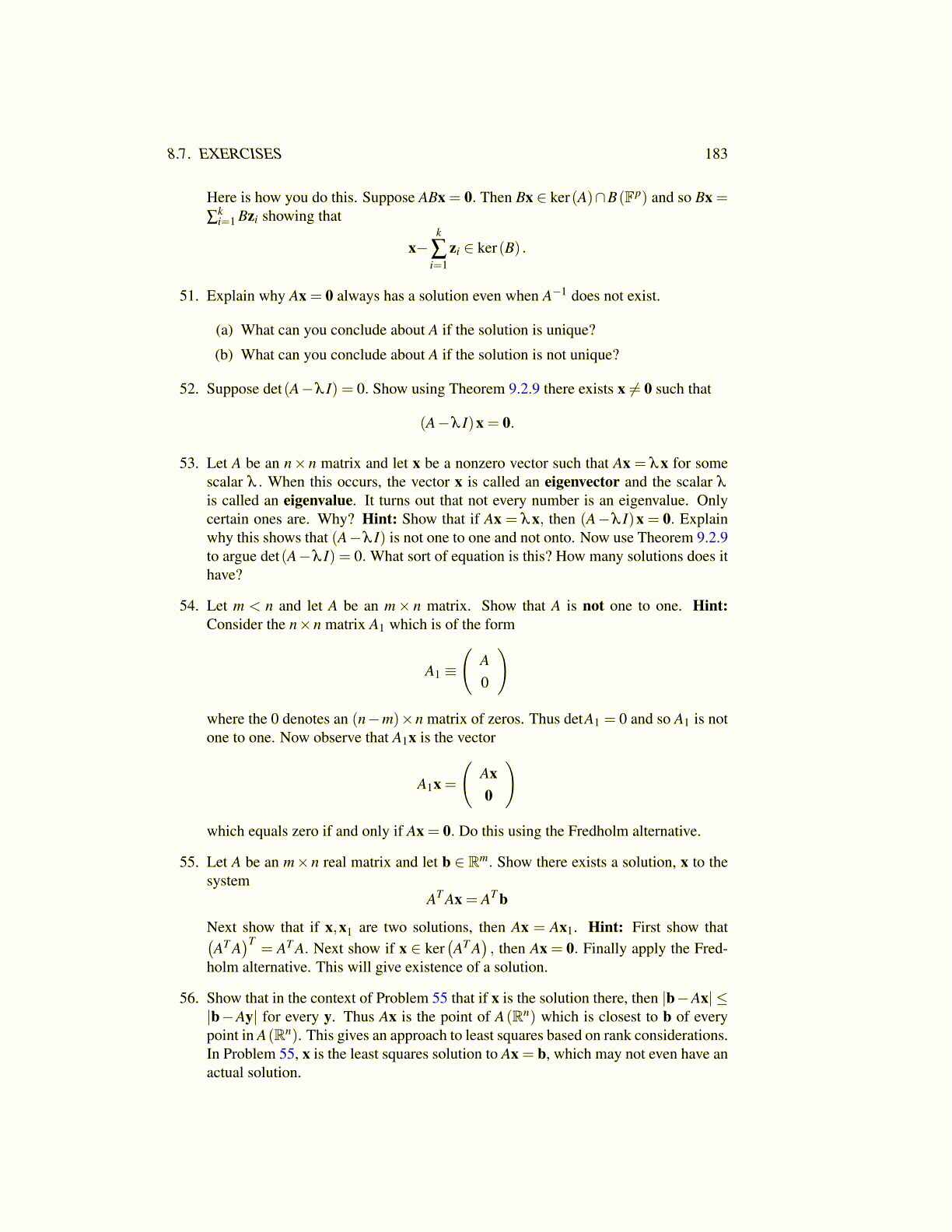
8.7. EXERCISES 183
Here is how you do this. Suppose ABx = 0. Then Bx ∈ ker(A)∩B(Fp) and so Bx =
∑ki=1 Bzi showing that
x−k
∑i=1
zi ∈ ker(B) .
51. Explain why Ax = 0 always has a solution even when A−1 does not exist.
(a) What can you conclude about A if the solution is unique?
(b) What can you conclude about A if the solution is not unique?
52. Suppose det(A−λ I) = 0. Show using Theorem 9.2.9 there exists x ̸= 0 such that
(A−λ I)x = 0.
53. Let A be an n× n matrix and let x be a nonzero vector such that Ax = λx for somescalar λ . When this occurs, the vector x is called an eigenvector and the scalar λ
is called an eigenvalue. It turns out that not every number is an eigenvalue. Onlycertain ones are. Why? Hint: Show that if Ax = λx, then (A−λ I)x = 0. Explainwhy this shows that (A−λ I) is not one to one and not onto. Now use Theorem 9.2.9to argue det(A−λ I) = 0. What sort of equation is this? How many solutions does ithave?
54. Let m < n and let A be an m× n matrix. Show that A is not one to one. Hint:Consider the n×n matrix A1 which is of the form
A1 ≡
(A0
)
where the 0 denotes an (n−m)×n matrix of zeros. Thus detA1 = 0 and so A1 is notone to one. Now observe that A1x is the vector
A1x =
(Ax0
)
which equals zero if and only if Ax = 0. Do this using the Fredholm alternative.
55. Let A be an m×n real matrix and let b ∈ Rm. Show there exists a solution, x to thesystem
AT Ax = AT b
Next show that if x,x1 are two solutions, then Ax = Ax1. Hint: First show that(AT A
)T= AT A. Next show if x ∈ ker
(AT A
), then Ax = 0. Finally apply the Fred-
holm alternative. This will give existence of a solution.
56. Show that in the context of Problem 55 that if x is the solution there, then |b−Ax| ≤|b−Ay| for every y. Thus Ax is the point of A(Rn) which is closest to b of everypoint in A(Rn). This gives an approach to least squares based on rank considerations.In Problem 55, x is the least squares solution to Ax = b, which may not even have anactual solution.